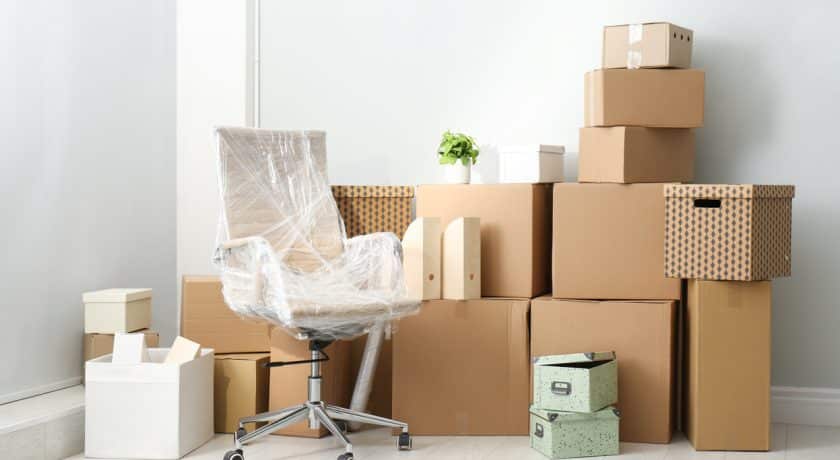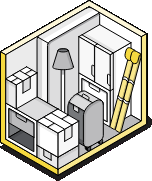Tips for Storing Furniture in a Non-Climate Controlled Space

Are you using your backyard or that newly cleared-out garage as extra storage space? What an intelligent way to maximize the extra storage space you already have in your home! Unfortunately, that is not the case for most Canadians, as they lack storage space in their home. Therefore, it is great when you can find extra space to store seasonally used furniture. A huge concern for many Canadians is being worried about storing in non-climate-controlled storage space, as there can be potential risks and challenges associated with doing so. One of the biggest concerns is potentially damaging your belongings while stored in a non-climate-controlled storage space. There’s no doubt that for your prized possessions, you want to be extra careful how they are stored, whether that be your antique art collection, favourite furniture item, or sentimental family photo albums. We at XYZ Storage want to help ease your worries and provide tips and tricks about storing furniture in non-climate-controlled environments. Not only do we understand that your life is big and worth making space for, but we also understand that your belongings are of the utmost importance to you, and we want to help you keep them safe.
Steps To Take To Storing Your Furniture in Storage
Here are three general steps to cover when you are thinking about storing your furniture in a storage facility regardless if you plan on storing it in climate-controlled storage units or non-climate-controlled storage space:
- Cleaning Your Furniture
The first important step you should take to protect your furniture is to thoroughly clean it before storing it. Furniture can include everything from couches, tables, bed frames, rugs, kitchen appliances, and more! It will help keep your furniture in good condition while in storage. However, you must not forget to dry everything before you store it. If you store damp items it can increase the chances of mold or mildew; which can damage your beloved furniture.
- Preparing Your Furniture
To prepare your furniture for storage, you should consider disassembling furniture to make it easier to store in a storage unit. It can also ease the transportation of each furniture piece from destination A to B.
- Moving and Packing Supplies
Lastly, you should consider investing in durable moving and packing supplies to ensure your furniture and other belongings are safe and secure. For example, invest in furniture covers to protect your furniture from damage while in your storage unit. You can learn more about furniture covers later in the blog post. At XYZ Storage, we serve as the one-stop shop for all your moving and packing supplies. You can visit any of our facilities to browse and purchase any of our supplies.
Furniture and Mold
No one likes to hear or see moldy furniture! Unfortunately, furniture can get moldy when the temperature and humidity conditions are hard to control. Moldy furniture can happen when you choose a non-climate-controlled unit, however, there are ways to mitigate the potential of mold growth while your furniture is in storage.
- Elevate Your Furniture: elevating your furniture: whether with pallets or boards, can ensure that your furniture is getting enough airflow to prevent any mold.
- Dry Your Furniture: before you decide to store away your furniture for a lengthy period, be sure to clean every item carefully and ensure it’s 100% dry before storing it away.
- Check On Your Furniture: one of the worst things you can do is store your furniture and never check on it again. You want to do periodic inspections to make sure there isn’t any mold growth or leaks. When you visit your storage unit, you can also air out your furniture occasionally to allow air to circulate when storing it for long periods.
- Ensure Proper Ventilation: if possible, ensure proper ventilation to keep your furniture in good condition.
By applying these strategies, your favourite furniture pieces have a greater chance of remaining in great condition when you take them out of your storage unit and are ready to use them again!
What Furniture Covering to Use?
Investing in covers for your furniture can play a critical role in protecting your furniture while in storage. Choosing a furniture covering for your furniture involves a lot of factors, such as the material of the furniture you are storing and the type of furniture. The general rule is to choose the material(s) that are breathable, yet still very protective. There are a few good options to choose from can include:
- Cotton material is a good choice of material as a furniture cover since it is both versatile and breathable. It will protect your furniture from any dust or dirt while in storage and will serve as a gentle protection barrier.
- Microfiber material protects your furniture from dust, dirt, and moisture which makes it a great choice of material.
- Breathable furniture blankets have padding to protect your furniture from damage while still allowing your furniture to breathe by letting air circulate. It is the ideal material for much larger and more valuable furniture.
Something to consider is to avoid plastic tarps as those actually end up trapping moisture and can cause damage to your furniture. However, any of the options listed above are great types of material to cover and protect your furniture.
Should I Shrinkwrap My Furniture?
The decision to shrinkwrap your furniture is a big one as the pros and cons are depending on what you plan to store and what you want to achieve.
Benefits
There are a few benefits to shrinkwrapping your furniture including:
- It can protect your furniture from dust and dirt as shrinkwrapping provides an airtight seal allowing little to nothing inside to keep your furniture looking clean and practically brand new!
- It can be suitable for different types of furniture such as outdoor patio sets.
- It can prevent moisture from reaching your furniture if stored properly.
Downsides
There are also a few downsides to shrinkwrapping your furniture including:
- It can cause mold if your furniture is not completely dry before storing.
- It can limit airflow and circulation, which can cause moisture build-up and cause damage to your furniture.
- Your furniture piece may not be as accessible if you were to shrinkwrap; hence very inconvenient and time-consuming.
Whatever option you choose, ensure you take the time to prepare your furniture to prevent mold, dust, or dirt buildup from occurring.
Do All Furniture Materials and Types Need To Be Climate Controlled?
The type of material the furniture can play a role in deciding whether or not a piece of furniture requires storage in a climate-controlled environment. Wooden, leather and antique furniture could thrive best in a climate-controlled storage unit. It can be worth the investment if a furniture piece has high monetary and sentimental value.
Wooden Furniture
Wooden furniture can be sensitive to temperature and humidity levels, thus more prone to damage. More specifically, when the temperature and humidity fluctuate, it can alter the structure and look of the furniture piece. Therefore, investing in a climate-controlled storage unit will help keep its structural integrity and appearance compared to a non-climate-controlled storage unit.
Leather Furniture
Leather furniture is also highly prone to damage if not stored in a climate-controlled environment. Choosing a climate-controlled storage unit can help prevent mold growth and moisture absorption, limiting the potential for long-term damage to the colour or material of the furniture.
Antique Furniture
Antique furniture can experience damage if chosen to store in a space that is not climate-controlled. More often than not, antique furniture has historical value and monetary value too. Antique furniture is also usually made of materials sensitive to temperature and humidity. These pieces in your possession likely have great significance; hence, you would not want to damage them.
Overall, it is worth the time to consider the risks associated with choosing non-climate-controlled storage depending on the type of material your furniture is. If it is within your budget and worth the investment, choose a climate-controlled unit for your furniture storage needs.
More Ways to Protect My Furniture From Fluctuating Humidity
There are several extra precautionary measures that you can take to protect your valuable furniture.
- Keep track of the humidity levels in your storage space, whether in your garage, shed, basement, or attic. The reason is that you are aware of any changes, and help you be one step ahead.
- Check on your furniture pieces periodically, so you can feel confident that there is no damage.
- Ensure proper airflow when storing your furniture, and avoid wrapping furniture too tightly and blocking the air circulation.
- Use moisture-absorbing packets to help absorb moisture near or around the furniture.
- Use a dehumidifier to regulate the humidity levels in the storage space.
Spending the time to take action on the above will benefit you and your furniture in the long run and minimize the risk of running into issues with your furniture, specifically those that cannot withstand extreme temperatures. It will be worth the extra time – you will thank yourself (and us) later!
How to Determine If Renting a Climate-Controlled Space Is Right for Me?
Renting a climate-controlled unit is an expense that might be worth it, however, there are a few questions that you can ask yourself first before making a decision.
- Are your belongings sensitive to temperature and humidity levels?
- Do you plan on storing your belongings for a lengthy period? Several months or years?
- Do you place great value and importance on your belongings?
You should consider renting a climate-controlled storage unit at a secure storage facility to protect your furniture; if you answered yes to any of the above. Some other factors to consider are how comfortable you would be in having your furniture stored in a non-climate-controlled storage unit and how much you have budgeted for storing it as well.
How XYZ Storage Can Help
To ease the challenges of storing in a non-climate-controlled space, we at XYZ Storage highly recommend renting a climate-controlled storage unit. This way you can feel more in control that your prized possessions are kept safe from any damage and even potentially extend the lifespan of your belongings.
Our XYZ Storage self-storage facilities are all equipped with climate-controlled units, so you feel confident to store your belongings with us. Whether you plan to store furniture, electronics, musical instruments, wine, artwork and photographs, medications, medical supplies, or anything else sensitive to temperature and humidity XYZ Storage can be the ideal solution for your storage needs.
We have locations located across Toronto and the GTA for your increased convenience and accessibility with many affordable and customizable self-storage options. Our self-storage facilities include Toronto Downtown, Toronto Midtown, Toronto West, Etobicoke, and Scarborough. If you are interested in renting with us; feel free to stop by one of our locations today, and our self-storage experts would be more than happy to assist you.












